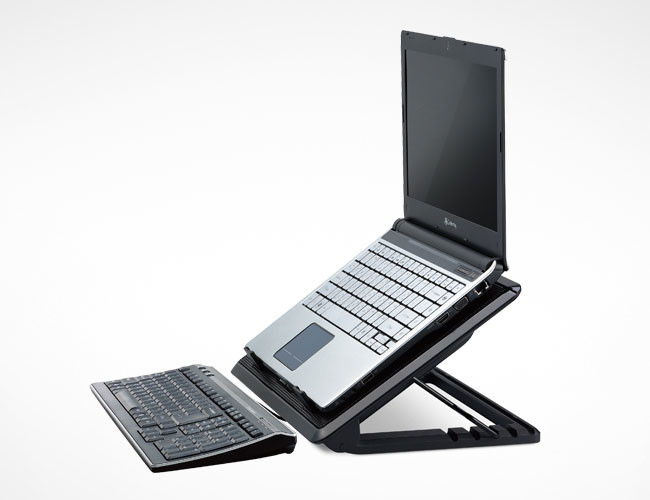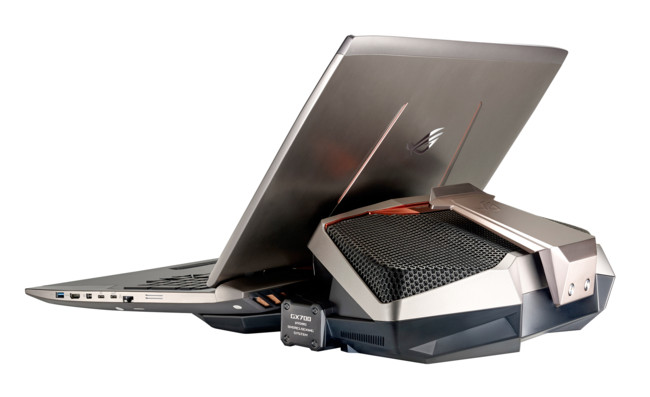Any time you have stopped to think why a laptop heats up like an oven? Well, it is true that not until that point … but almost. Portable outrageous heat and still more so as long as we use it.
Why? What should these temperatures and above all, what are the consequences? Today we will talk about one of the most common problems between technologies and is among the most negative effects can bring. Today we talk about laptops, heat and how to avoid it.
Why a portable heat up?
Both laptops and other electronic devices are heated as we use them, and the more powerful the pileup, more heat generated. This is because by the electronics and power circuitry passes and due to lead resistance heat is generated under the Joule effect.

Today there are no ways to mitigate this heat except to use very low power (why smartphones are heated less, but so do, or devices like the Raspberry Pi not need additional ventilation). It is for this reason that manufacturers invent refrigeration systems such as those used in computers, and help reduce its operating temperature.
Heat is one of the greatest enemies of laptops in particular and technological devices in general. It is very bad for a computer that keeps the heat inside, raising the physical temperature at which the components are, and in extreme cases may create physical damage to the chips that is often irreparable and need replacing some components.
In addition, the temperature rise due to the use is directly related to energy power needed to make it work, and this term power is proportional to the computing power offered by the computer. The more powerful the computer, the more it will heat. Perhaps you noticed on occasion when gaming computers are generously sized; because they need a larger house both … components such as a cooling system also larger to be able to reduce the operating temperature.
How the heat of a computer is combat? The most common solution in modern electronics is to use a combination of heat sinks and fans. The sinks are attached to the chips and are responsible for ‘out’ its heat to the outside; meanwhile, the fans move warm air off the component.
You may also like to read another article on YellowTube: Western Digital introduced its hard drive 10TB
Traditionally there have always been some components that are hotter than others, something that is easy to check into a desktop computer: the central processing unit (CPU) and graphics processor (GPU) are equipping large refrigeration systems, precisely because they are generate more heat. In a laptop operation, it is equivalent, but since all the components are hidden behind a cover not usually see it firsthand, (though anyone spoiling a laptop can check).
The limits heat
We said before that there is a limit temperature component, which varies depending on model chip. For example, Intel is very clear in this regard and the technical specifications of its processors indicated under the variable Tcase.
In other processor models the temperature is different, and generally is between 80 and 100 degrees. Component manufacturers refer to this temperature Tcase as such a value that, if exceeded, may involve physical damage to the chip, and therefore a subsequent malfunction.
The industry is aware of this problem, has implemented common barriers in technology today: since computers have a wide variety of sensors, including temperature of various components, if the chips are close to limits (64 degrees Celsius that we spoke earlier) the computer automatically resets itself to avoid reaching that figure. Continue to rise if you can even turn off, which also occurs in phone. Computers usually allow a broad set to alert the user when a critical temperature is reached, even to automatically shut down, and check your BIOS or UEFI for more information.

Automatic hardware reset means that limit their performance components, in order to reduce the energy required to operate and generate less heat. The downside is precisely that the power capable of providing the computer ‘as a whole’ will be lower, and while there is often a significant difference, it can make an impact in certain cases.
It is noteworthy that prolonged exposure to heat can lead to a reduction in the life of the laptop in general, although we must recognize that more and more durable. A user who only uses his laptop to play may have bigger problems than someone who only use it for surfing the Internet, because the game needs more computing power, and therefore need more power and generate more heat. This has no impact in the short term, but when the action is repeated for many years.
You may also like to read another article on YellowTube: 10 terabytes in one bottle with helium
Likewise, the heat can also cause changes in the environment, and we refer to the tables, walls or other objects around your laptop. For example, when the air vents of your laptop are always located in the same place so that the air heats the very surface of the wall, they can be reached taking small damage (aesthetic often only) by the continuous flow of hot air in the same location.
Dust, the great enemy of laptops
It is possible – and very common – that portable will degrade over time, and that the operating temperatures are higher and higher as the device used. In addition, there is an enemy that is often almost invisible to our eyes, but inevitably acts on the technology: it is the dust.
Any electronic pileup attracts dust, and this has multiple disadvantages. Besides the aesthetic (nobody likes the screen is full of dust), it is one closely associated with the heat: dust cores that are attached to components are formed and reduce the space between them. The longer, more dust is generated; the more dust is generated, use more space and therefore less space exist.
There is the idea that computers fans cold air introduced into the components, a move that seems quite logical to cool somewhat. The reality is just the opposite: sinks and fans draw heat from the components.
Moreover, it is for this reason that, in cases where there are large amounts of dust on a computer, this heat tends to stay within the computer itself, without the ability to go outside. If the heat stays around components – memory, and hot in itself – then it fails to reduce the temperature, only to rise continuously.
To avoid this there are several measures. First, the most archaic – but one of the best performing offers – is simply to clean your computer periodically. It is easy to do on a desktop in which the component access is direct, but slightly more complicated on a laptop often we have to partially disassemble. Avoid direct contact with a vacuum cleaner (vacuum cleaners often have too much power, which can start some components) and follows a logical indication: Do not use liquids and disconnect energy sources.
Keep in mind that you do not need to leave your computer as the first day, but remove large dust cores that have been created with the passage of time. A brush or brush can be helpful.
Second, if your computer has had an enormous workload for an extended period of time it is possible that some components have been damaged. Take her service to get it put about , is that like cars need an oil change, on computers sometimes you also need to replace, for example, thermal grease , a substance that is placed between the chip and the heat sink so that the contact surface is greater. Currently the thermal pastas have a very long shelf life, but in some cases, it is advisable to change them.
Third, help your computer to cool. This can be useful in extreme cases where neither cleaning nor tuning in a service technician has worked: try using a cold surface, such as may be base ventilation, are always welcome. You can also try applying a direct airflow to the computer, for example via a fan, to urge the movement of air.
You may also like to read another article on YellowTube: The 8 best wireless hard drives
If it still has not worked, it is still another option, although it is the most dramatic of all: PC performance limits for this consumes less energy and therefore generates less heat. This solution can also be seen as temporary until you find the final, and is done through the configuration panel BIOS / UEFI available to most users

ASUS RoG GX700
Within the range of products to play ASUS is the ASUS RoG GX700, a portable gaming designed for the most demanding public and where the temperature plays a crucial role.
Its components are among the most powerful on the market (Intel Core i7, graphics NVidia GTX 980 desktop, 64 GB DDR4 RAM memory, etc.), which is why so ASUS Overclocking Hydro has built a liquid cooling system much more efficient than systems airflow.
This is located on an external accessory, since it would be impossible to integrate within the casing of the notebook, so that when we need it can connect the ASUS GX700 RoG this ‘base’ for liquid cooling becomes operational.
When ASUS RoG GX700 works with liquid cooling accessory it is able to offer a much higher performance, for which consumption rises to 330 watts. This is ideal, for example, to get the best quality video games, or for all kinds of demanding tasks. Conversely, it can also function as baseless integrates its own cooling system air but, yes, limited to 180 watts.
There will be several configurations GX700 ASUS RoG available, all with top-end Intel Core i7-6820HK, 32 GB of RAM and NVidia GeForce GTX 980M graphics processor. The models differ in the (full HD or 4K, both 17.3-inch) display and storage (RAID 0 SSD M.2 with up to 256 or 512 GB capacity), in all cases with support base RoG Hydro Overclocking System adds liquid cooling.
